Story, color photos and model by Aldo Zana
It is quite unusual that a particular model car exhibits so many unique values: the only three-dimensional image of a racing car 1) built in a single unit, 2) raced only once, and 3) then destroyed for good.
The car upon which the model is based is Fiat’s swansong in Grand Prix racing, the 1927 Type 806 with the 406 engine. The 1:12-scale model is built from the kit produced by Protar, an Italian company operating from the late 1960s to the early 1990s.
Both stories are worth remembering.
Fiat was the dominant power in Grand Prix racing in the 1920s. When Vittorio Jano left Turin for Alfa Romeo in 1924, Fiat’s racing program suffered, exacerbated by the growing desire by Senator Giovanni Agnelli to focus on production cars.
However, the racing know-how was still there, thanks to Tranquillo Zerbi, the engine wizard, and the team of designers and workmen managed by Carlo Cavalli and Guido Fornaca. By 1926 they started the design of a new engine to go beyond the standard inline-eight architecture dominating the 1.5-litre formula.
The team designed a 12-cylinder unit made with two parallel six cylinder rows geared together at the rear end of the two crankshafts. The small capacity (750 cc) of each row, and the clever architecture with the central camshaft acting on the exhaust valves of both rows gave a respectable output of about 180 HP @ 8,000 rpm. Weight was 380 lbs, quite good for the time.
When Fiat selected the U architecture, it is worth of note that at the same time Frank Lockhart in the U.S. sketched, and Jim and Zenas Weisel designed, a U16 engine based on two inline-eight Miller 91 cylinder rows geared together by a lower central shaft linked to the rear wheels. With a capacity double that of Fiat’s, Lockhart engine, mounted on his Blackhawk land speed record car, built in Indianapolis, delivered (theoretically) roughly the same specific power: 125 HP/liter.
We don’t know of any contact or cross-fertilization between Indianapolis and Turin in the period, even though the new Fiat engine/car was developed with the aim to enter Pietro Bordino in the Indianapolis 500. The Indianapolis entry didn’t materialize due to the delays in developing the new engine to a decent level of reliability.
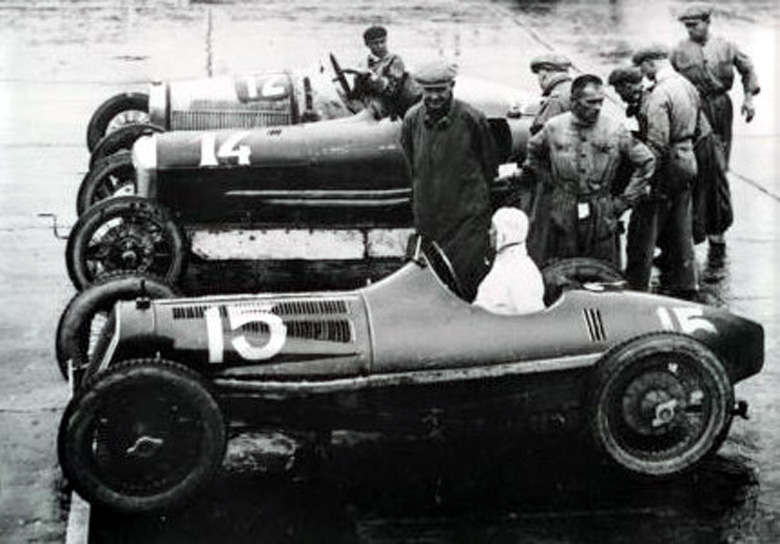
The only known photo of the 806 Fiat at the start of the preliminary of the Gran Premio di Milano, a short curtain-opener of the Italian Grand Prix, Monza September 4, 1927. It was the only race of the new car. Pietro Bordino at the wheel against a very poor competition; the two cars (an obsolete Bugatti and a Chiribiri) in the heat, and faced similar opposition in the five lap (31 mile) final. Felice Nazzaro in raincoat is standing along side of the driver.
The 806 body didn’t follow the clean lines of the former 804 and 805 Grand Prix cars, yet it presented interesting features in the frame, above the front axle and below the rear one with the driver offset on the right and sitting quite low. The center of gravity was low, also. Suspensions layout was fully traditional with longitudinal springs and friction dampers, all outside the body. The oil tank sat in the cockpit on the left hand side of the driver, where the transmission shaft was located, too.
The new car missed the top events of the European season and Indianapolis. Due to the doubts on the reliability, it was entered in the Gran Premio di Milano, a short curtain-opener of the Italian Grand Prix, Monza, September 4, 1927. It was a five lap (50 km, 31 mile) affair with two races. Competition was non-existent in the preliminary and only a bit less weak in the final where some of the second-tier grand prix entrants filled the grid. Under a downpour, Pietro Bordino won both quite easily and rounded a fastest lap at 96.50 mph, which was glorified as faster than 94.31 mph recorded by Robert Benoist in the Delage, winner of the Italian Grand Prix on the same day. Yet the Grand Prix was a 310-miler.
The 806/406 was an interesting proposal, yet it came too late and was still missing reliability. The 1.5 liter formula was terminated at year’s end 1927. The company decided to stop racing: everything about racing cars had to be destroyed. Only a few photos and drawings of the 806/406 were saved. The car and the engine went to the scrapyard and nothing was left behind.

The side of the kit box has a good representation of the finished model. The model is the only three-dimensional representation of the actual car, destroyed by the company in 1928. The kit is based on the model preserved in the Centro Storico Fiat and on the surviving drawings.
The Protar kit is very detailed. The main parts (frame, body, suspension) are die-cast metal. The engine is plastic, the driver’s seat is rubber-like plastic. The springs are assembled by five thin layers of hardened steel. Tires are real rubber, precisely sculpted and of lasting quality. The 1:12-scale (model length 311 mm) doesn’t allow for cheating on details and measures.
The booklet on the assembly instructions is quite explanatory, Japanese-style, yet it doesn’t downplay the difficulties of assembling. Of course, a special glue for metal is needed in addition to the regular one for plastic. The metal body parts are porous and need to be polished, sanded and covered by putty to get a perfect background to the lacquer.
The kit was expensive in period and the skill needed to assemble it further reduced the audience. The end-result is an impressive item, almost a museum piece.
Protar was the brand by the company established by Tarquinio Provini (1933-2005), an Italian two-time world champion motorcycle racer. In 1966, when he was forced to quit competition due to a bad accident at the Tourist Trophy, he focused on the production of 1:9-scale plastic kits of the bikes he rode or challenged in races. The kits were positioned at the top of the market, and when Mr. Provini extended the reach to racing cars, he established new levels of quality, at least in Italy, where the kits had a successful season in the 1970s. The Protar product range lasted until the early 1990s.
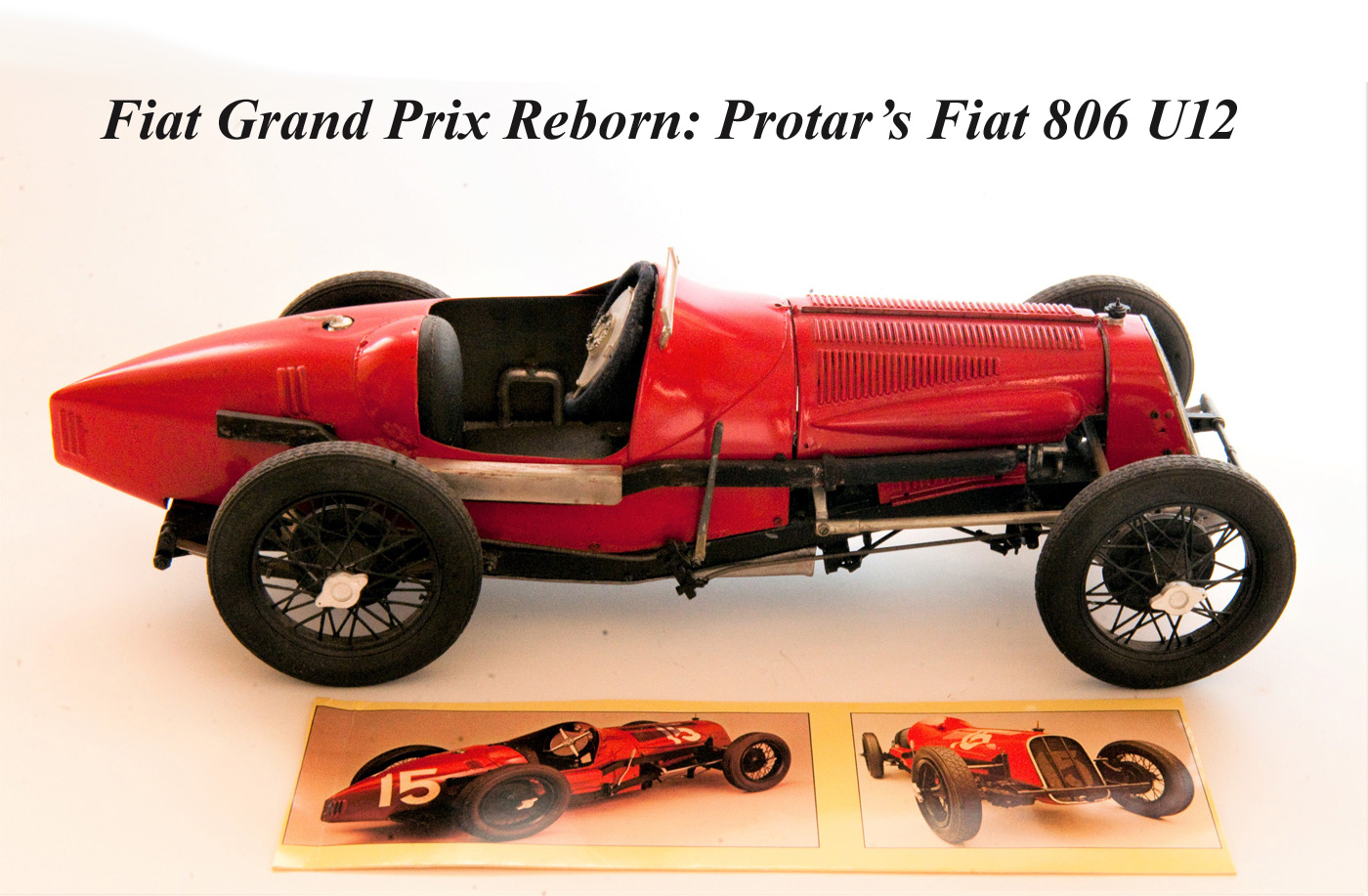
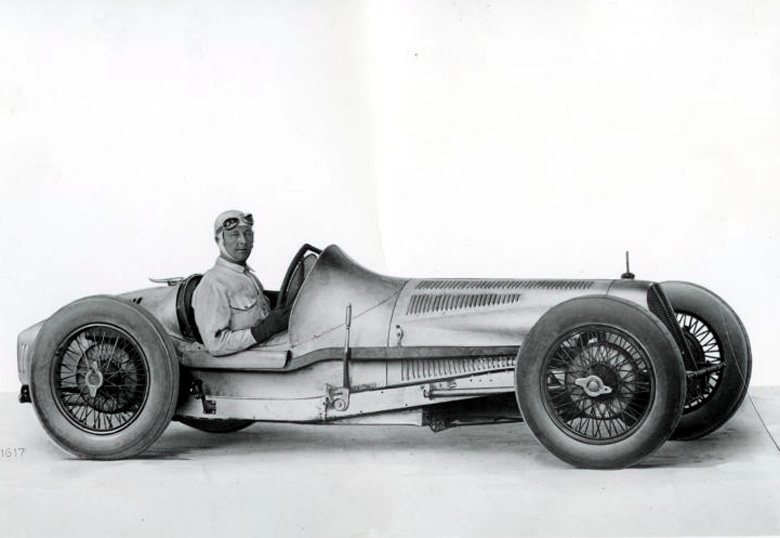
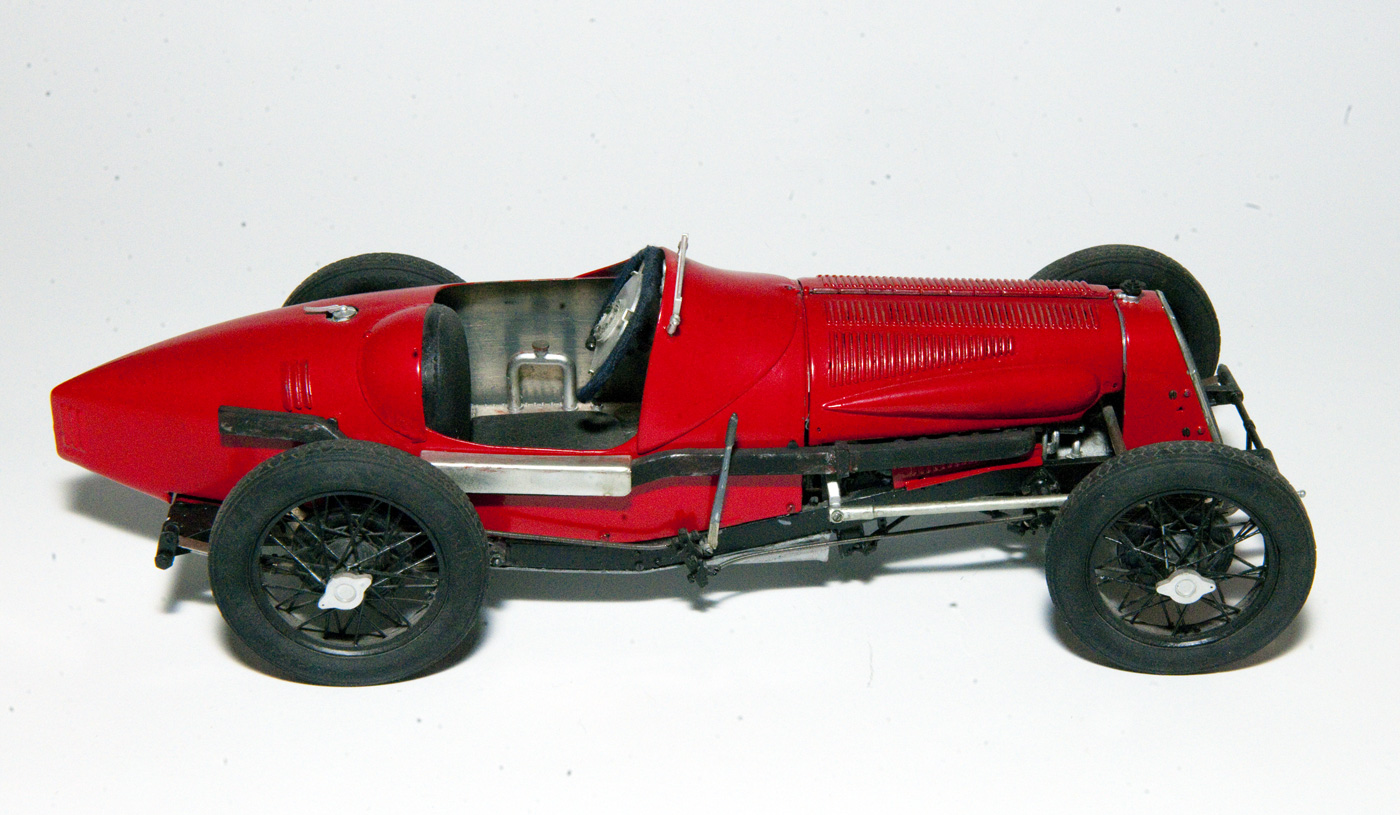
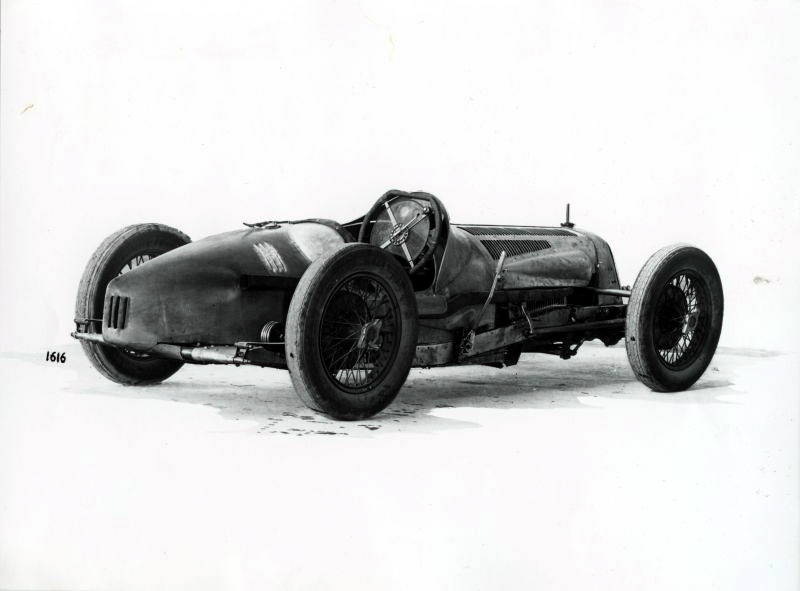
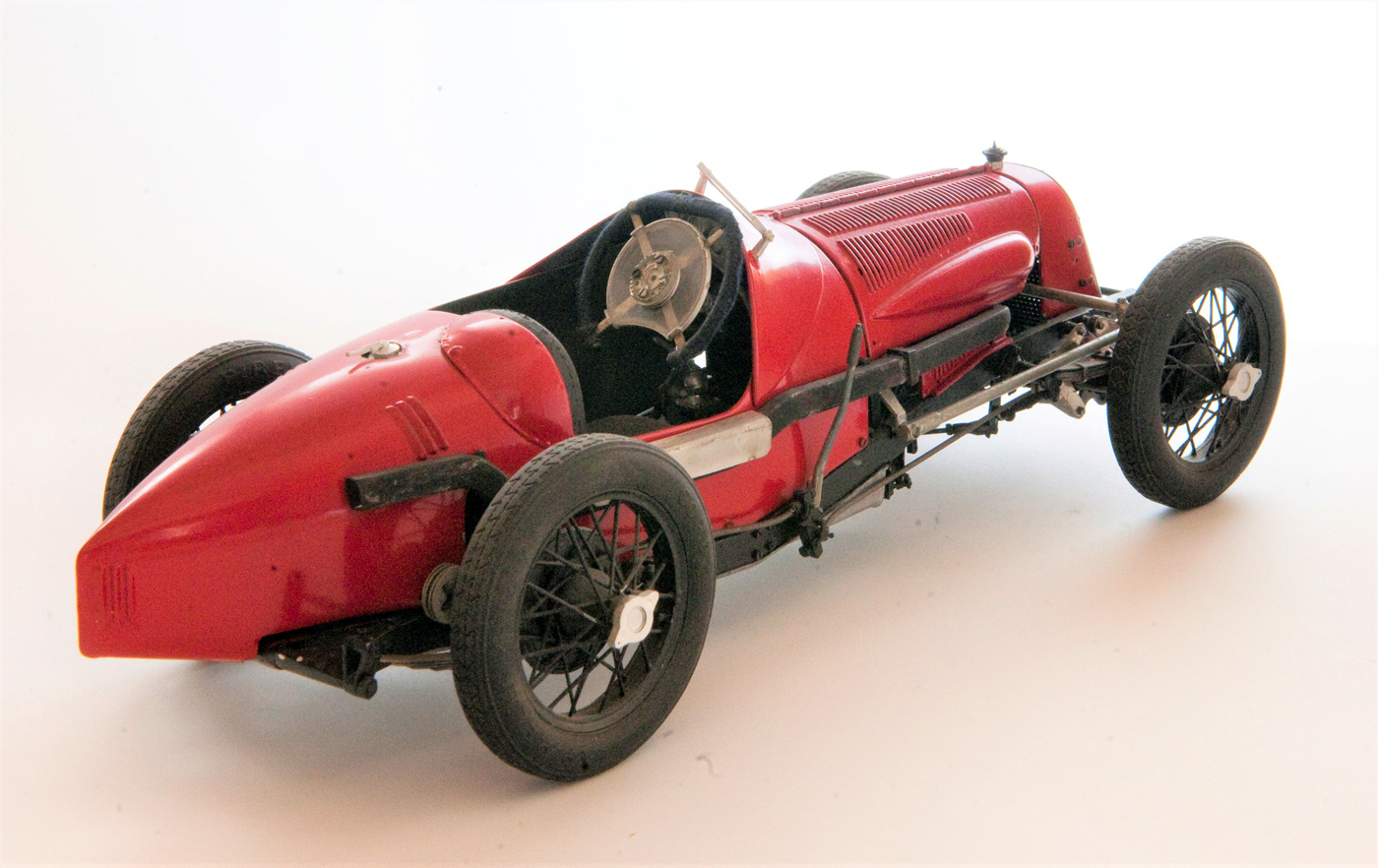
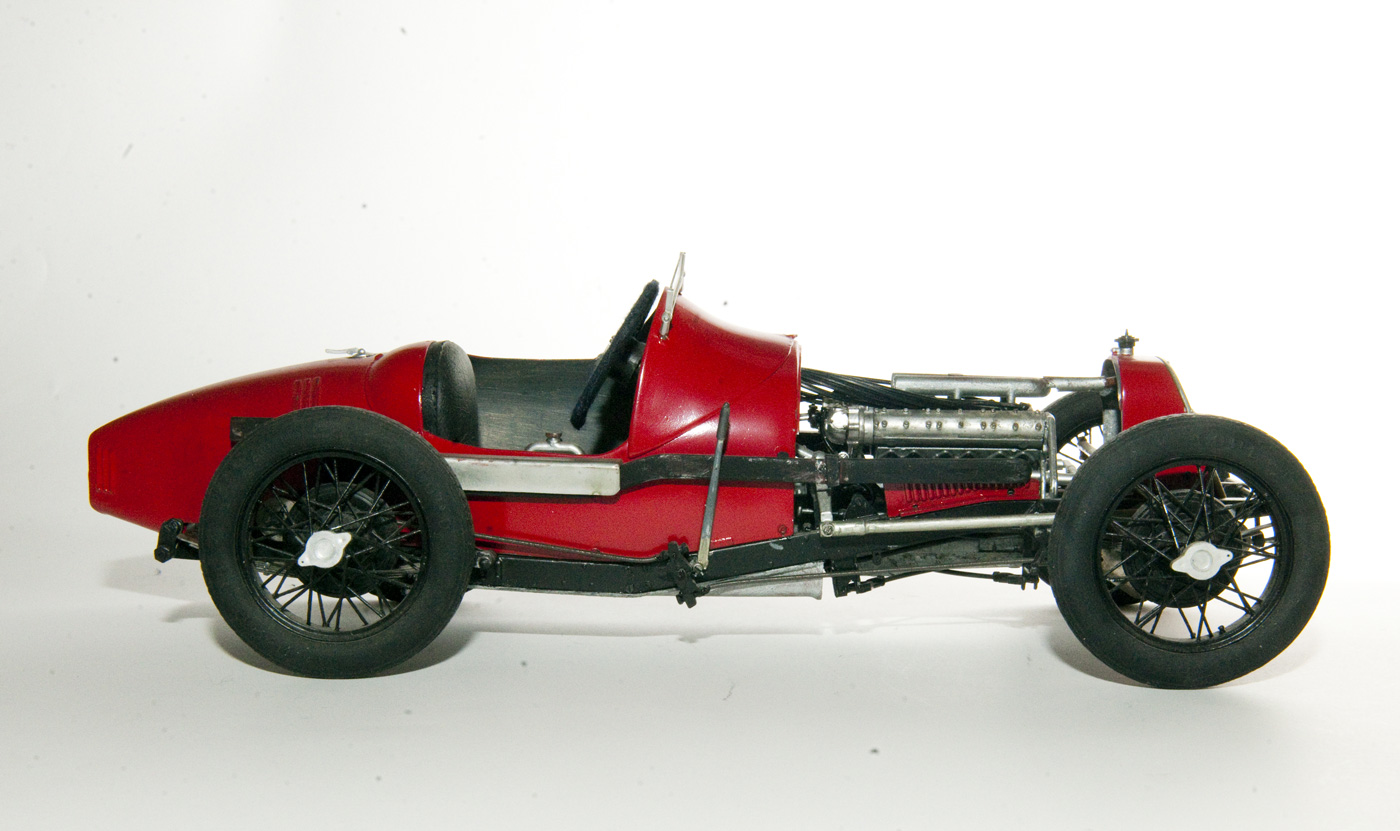
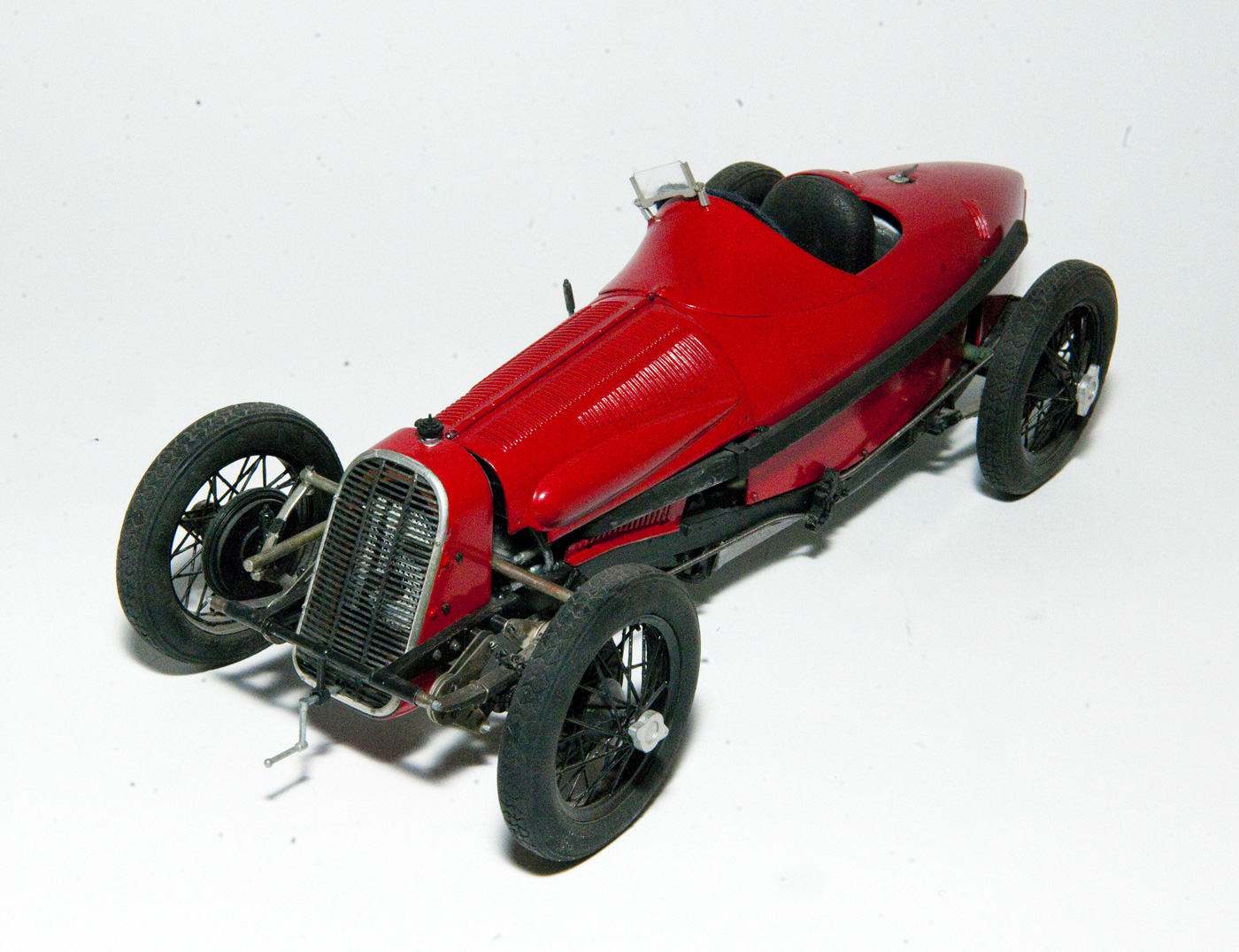
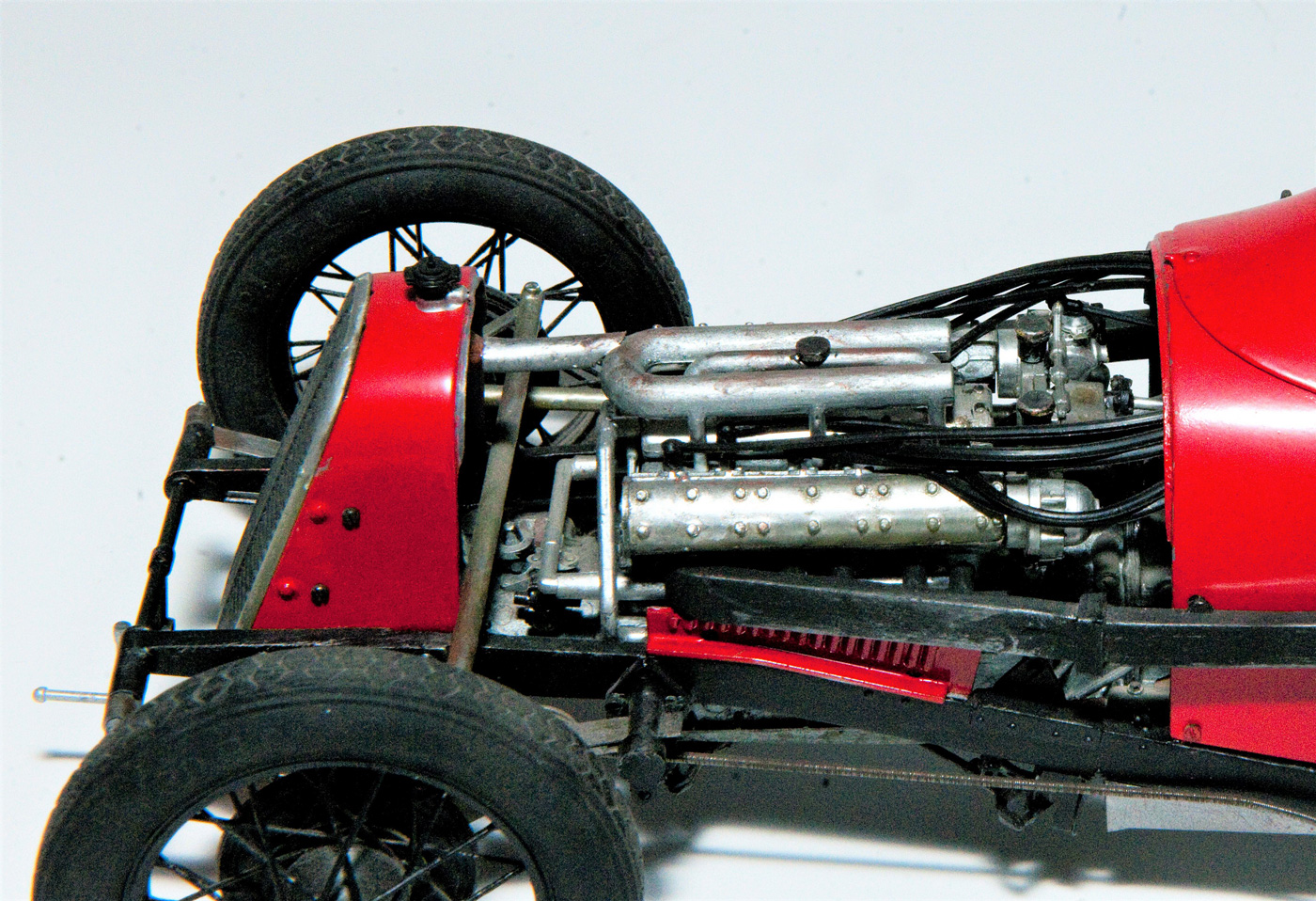
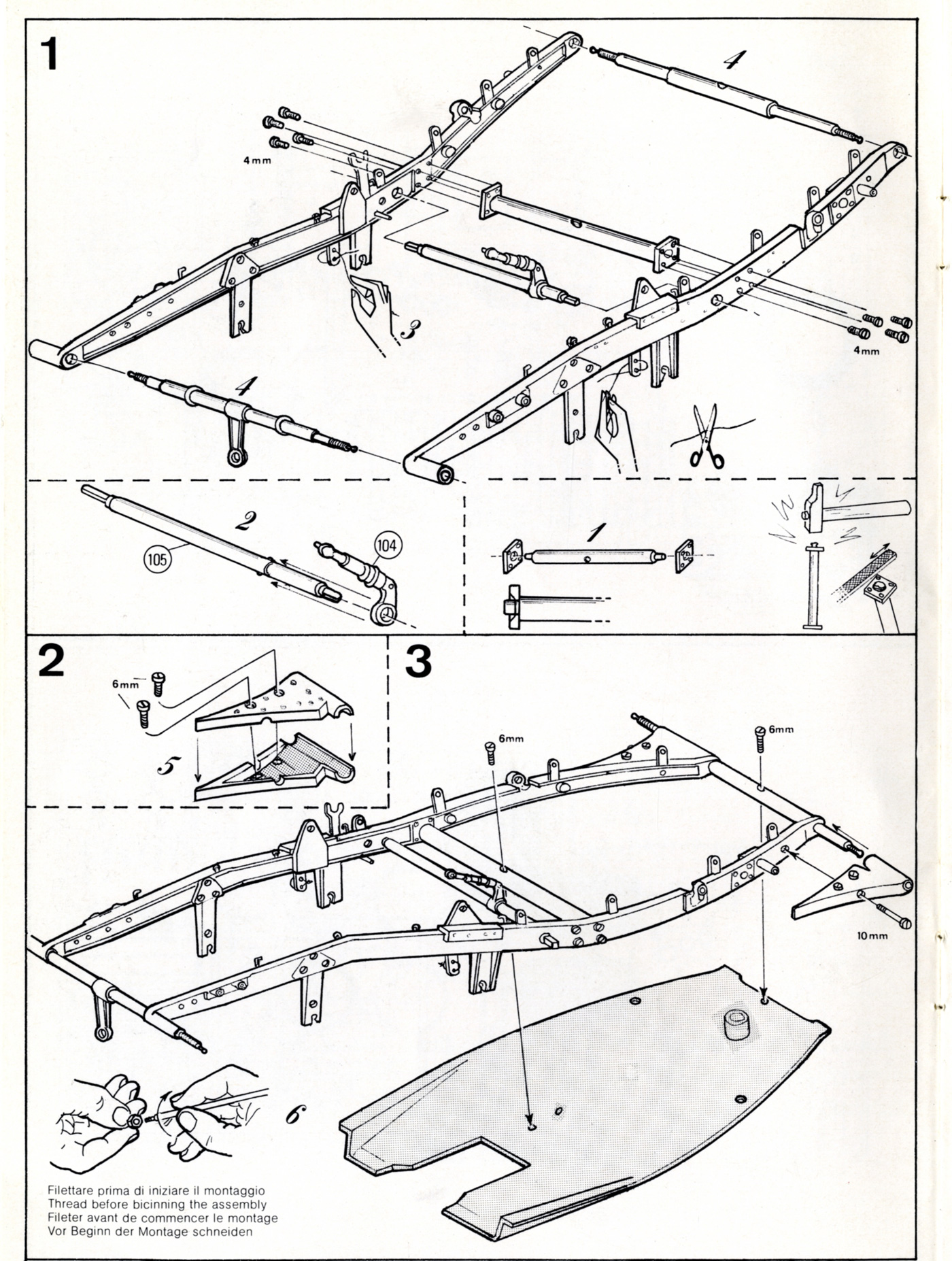
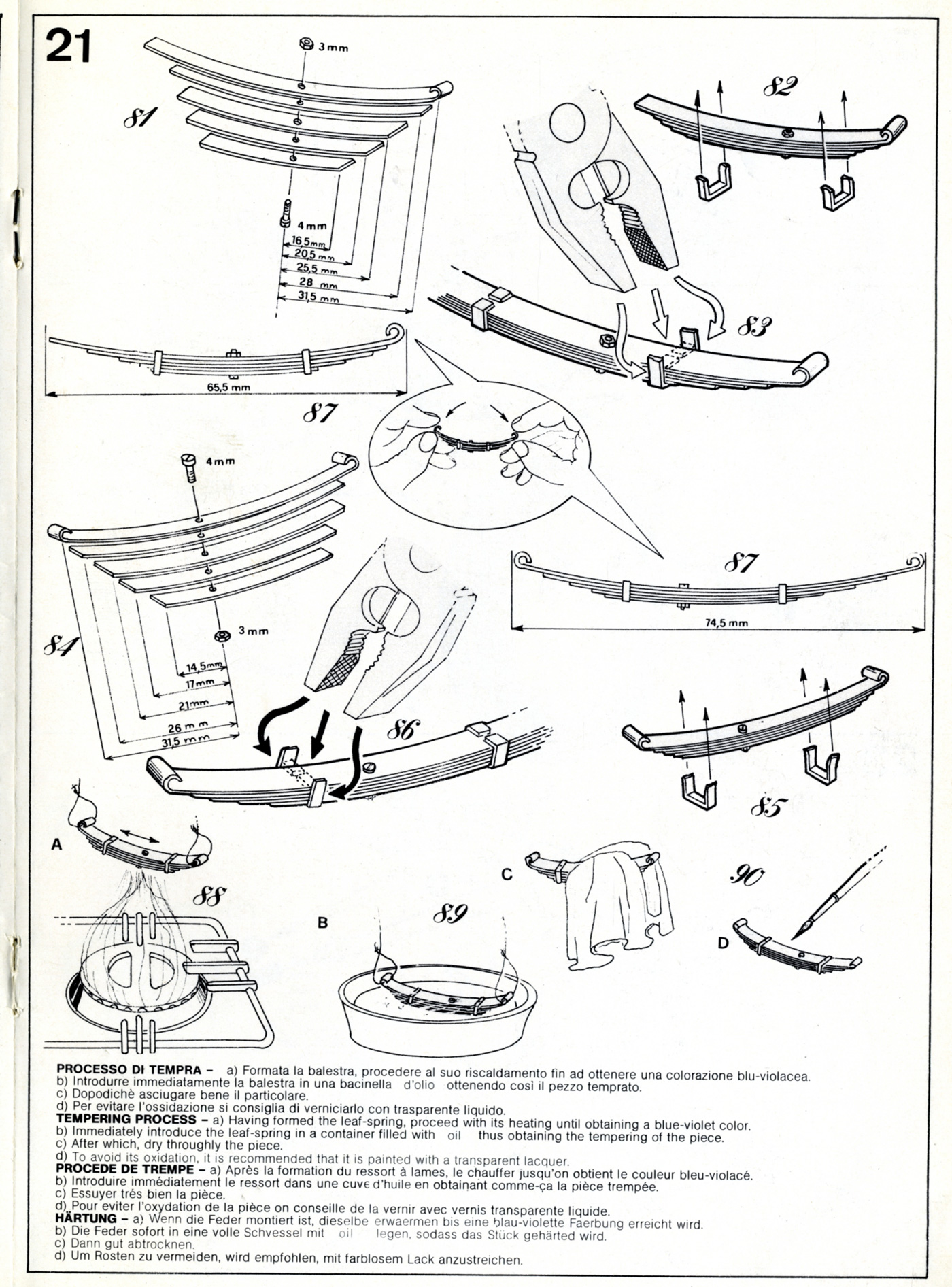
Interesting article, Aldo! Oddly enough, someone my father knew through a shared interest in steam cultivation, who ran an engineering business, was involved in building a replica of this car, apparently with the full co-operation (and access to any surviving drawings) of the Fiat factory. No idea what happened, this must have been nearly 20 years ago now. I will see if I can contact him and find out. There was also a good 3-page article about the 806 in Motor 1st August 1970, written by Cyril Posthumus, with drawings by Brian Hatton. I have a copy plus one other (poor) photo of the car. Happy to share with you if you are interested!
Good article as usual, just a little incomplete. Italian modelmaker Italeri took over the Protar moulds and is actually offering this model for sale as a (mainly) plastic kit.There are plenty of forums dedicated to this model so no lack of info on building it.
Italeri did the same thing with the Fiat Mephistopheles which also started life as a metal Protar kit. Orginally the company was called Italaerei (Italian aeroplanes) but it was later simplified to the current form since so few people managed to pronounce it correctly.
Keep up the good work,
Michel Van Peel